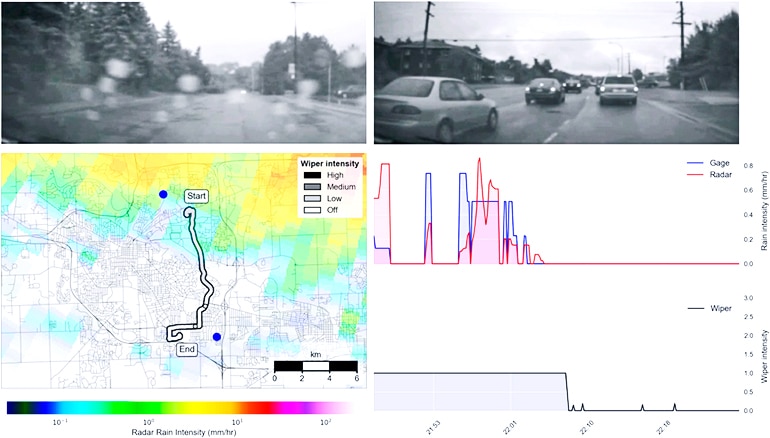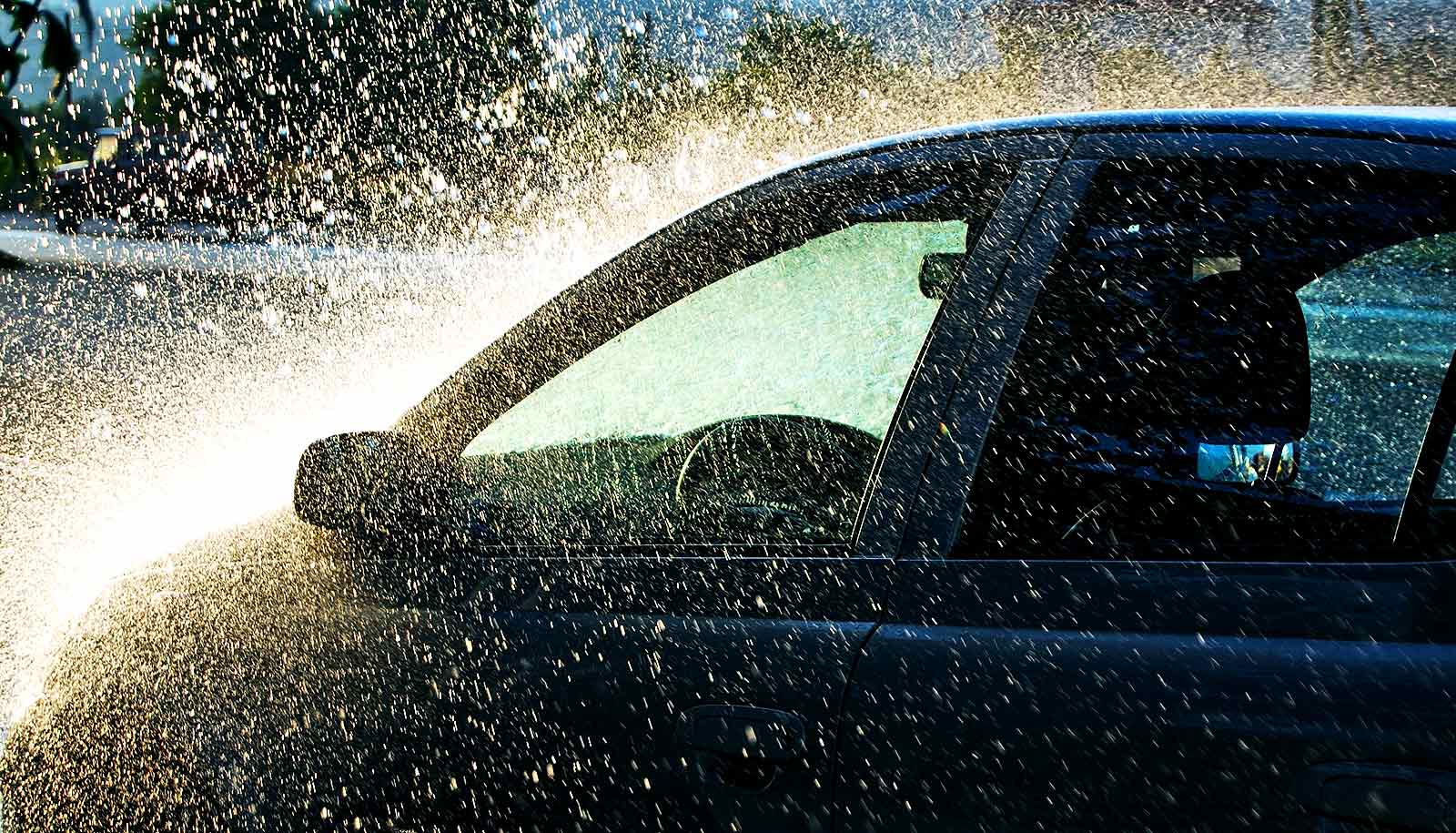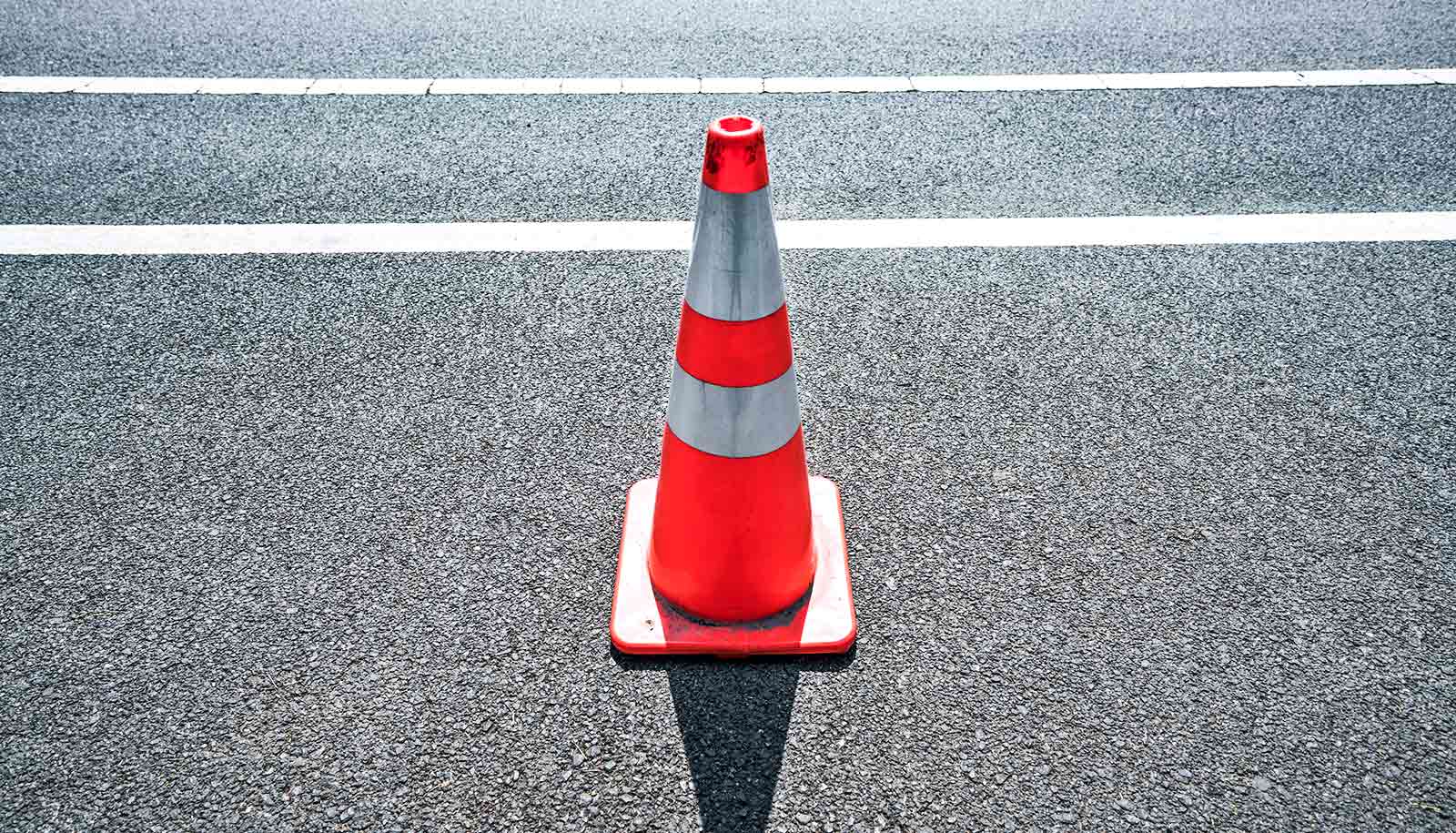Tracking windshield wiper activity can provide faster, more accurate rainfall data than radar and rain gauge systems we currently have in place, according to new research.
With a test fleet in the city of Ann Arbor, Michigan, engineers tracked when wipers were in use and matched that information with video from onboard cameras to document rainfall. Researchers collected data from a set of 70 cars outfitted with sensors in windshield wipers and dashboard cameras.
A community armed with that real-time data could move more quickly to prevent flash-flooding or sewage overflows, which represent a rising threat to property, infrastructure, and the environment.
Coupled with “smart” stormwater systems—infrastructure outfitted with autonomous sensors and valves—municipalities could potentially take in data from connected vehicles to predict and prevent flooding.

“These vehicles offer us a way to get rainfall information at resolutions we’d not seen before,” says Branko Kerkez, assistant professor of civil and environmental engineering at the University of Michigan. “It’s more precise than radar, and allows us fills gaps left by existing rain gauge networks.”
Better data, better predictions
Our best warnings for flood conditions come from the combination of radar tracking from satellites and rain gauges spread over a wide geographic area. Both have poor spatial resolution, meaning they lack the ability to capture what’s happening at street-level.
“Radar has a spatial resolution of a quarter of a mile and a temporal resolution of 15 minutes,” says Ram Vasudevan, an assistant professor of mechanical engineering. “Wipers in contrast have a spatial resolution of a few feet and a temporal resolution of a few seconds which can make a huge difference when it comes predicting flash flooding.”
Earlier this year, the European Academy of Sciences reported the number of floods and extreme rainfall events increased by more than 50 percent this decade and happen four times more often than they did in 1980.
“Because of the sparseness of radar and rain gauge data, we don’t have enough information about where rain is occurring or when it’s occurring to reduce the consequences of flooding,” Vasudevan says.
“If you have fine-grain predictions of where flooding occurs, you can control water networks efficiently and effectively to prevent all sorts of dangerous chemicals from appearing inside our water supply due to runoff.”
Connected cities of the future
Creating a blanket system of sensors across a city for street-level data on rain events would be costly. By utilizing connected vehicles, the researchers are tapping a resource already in place now that will only grow larger in the future.
Kerkez and Vasudevan say their research represents a first step in creating a smart infrastructure system that collects and responds to data from vehicles on the road. But more work will be needed to bring the concept to fruition.
“One day, when everything is connected, we’re going to see the benefits of this data collection at a system scale,” Kerkez says. “Right now, we’ve made connections between cars and water, but there will surely be more examples of data sharing between interconnected infrastructure systems.”
Source: University of Michigan



